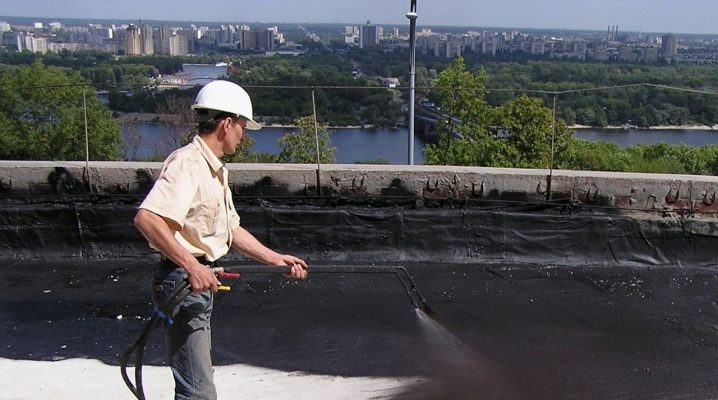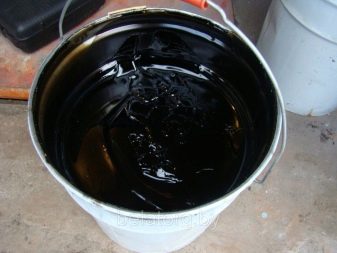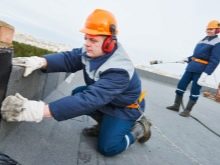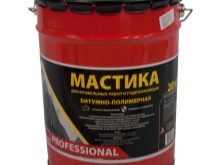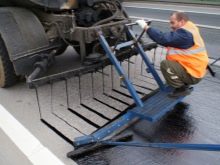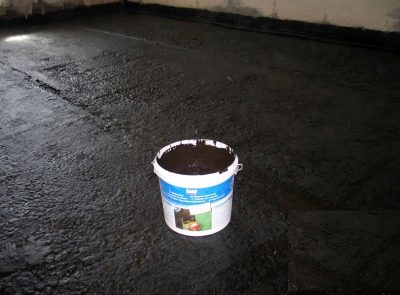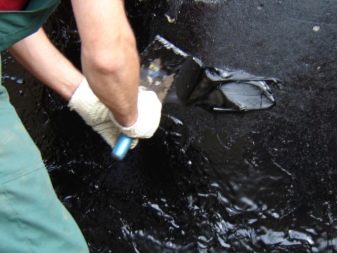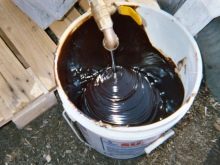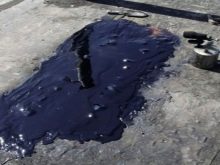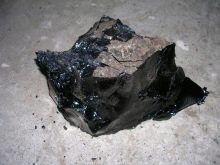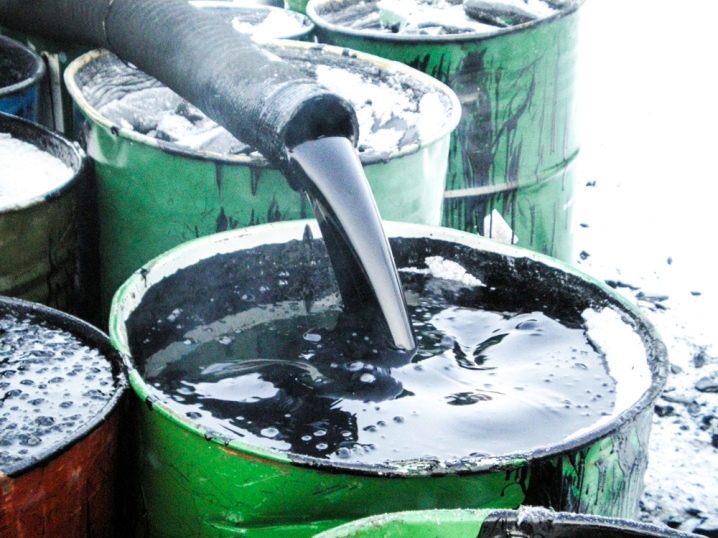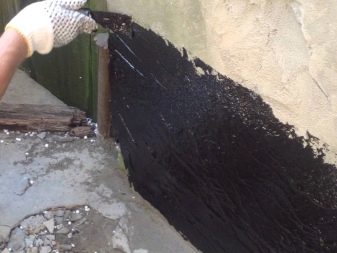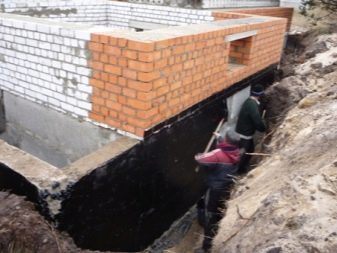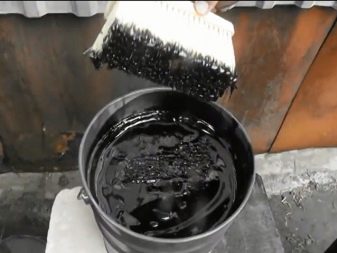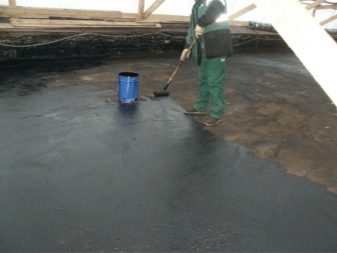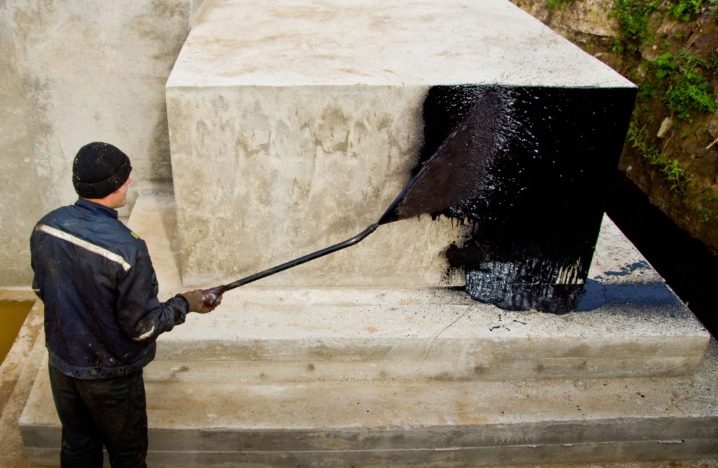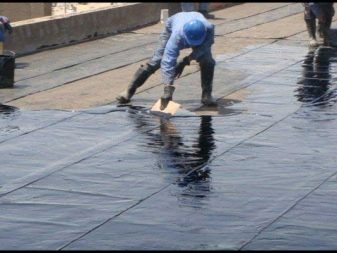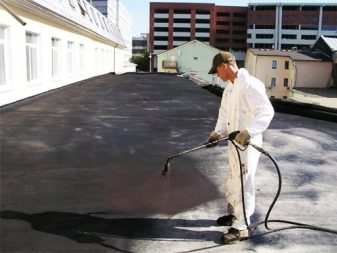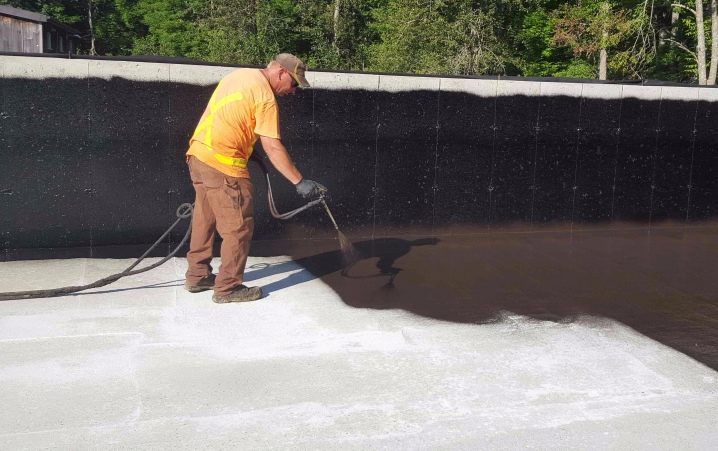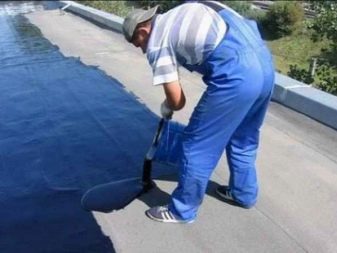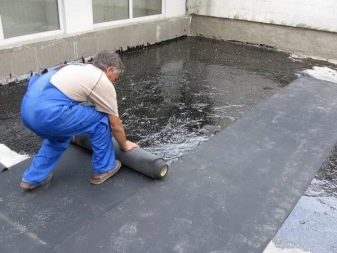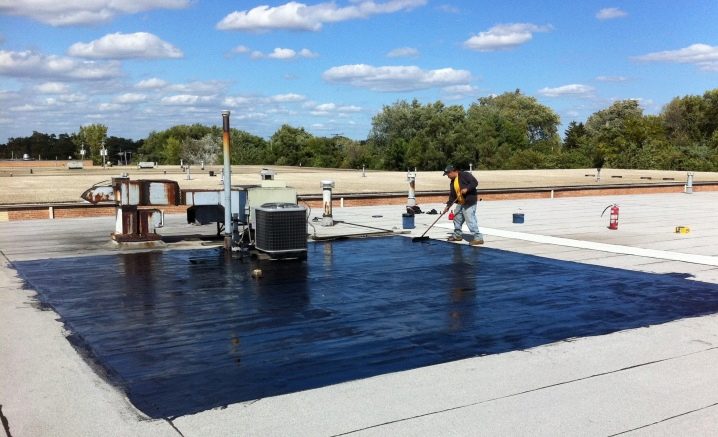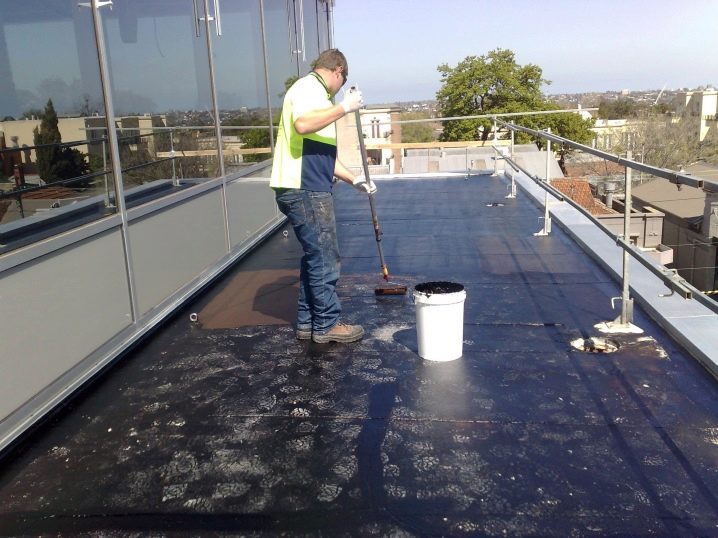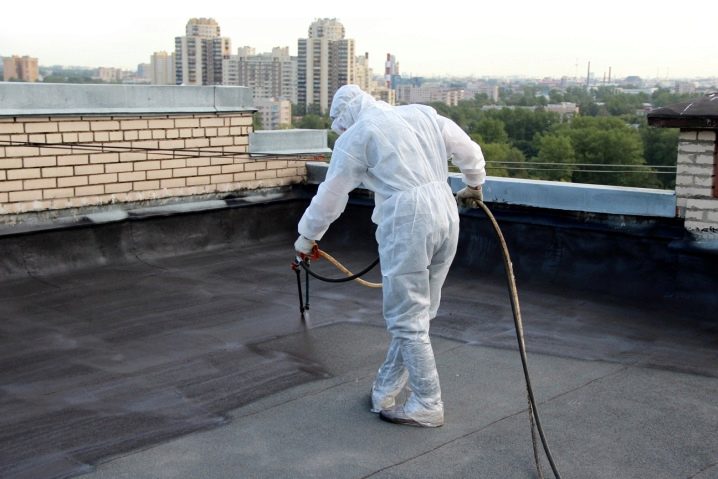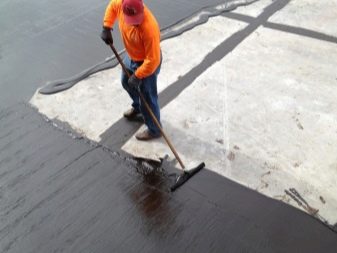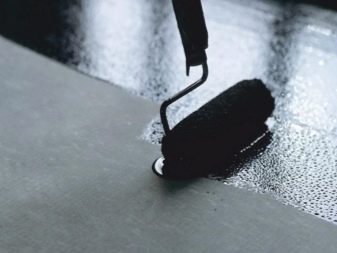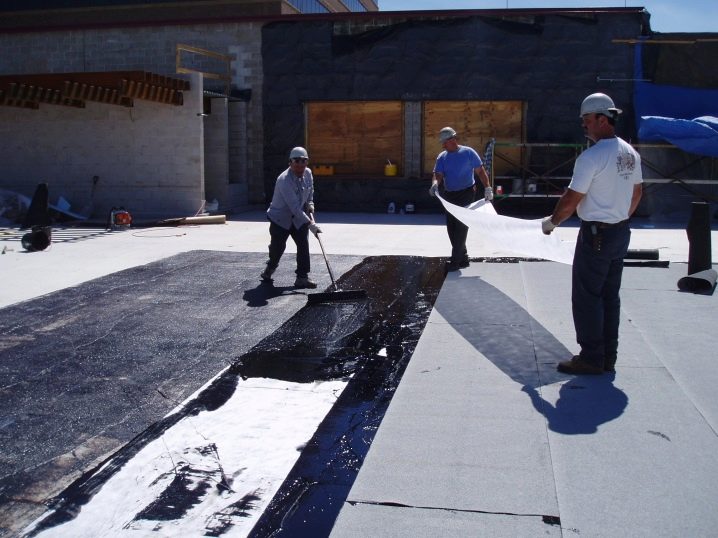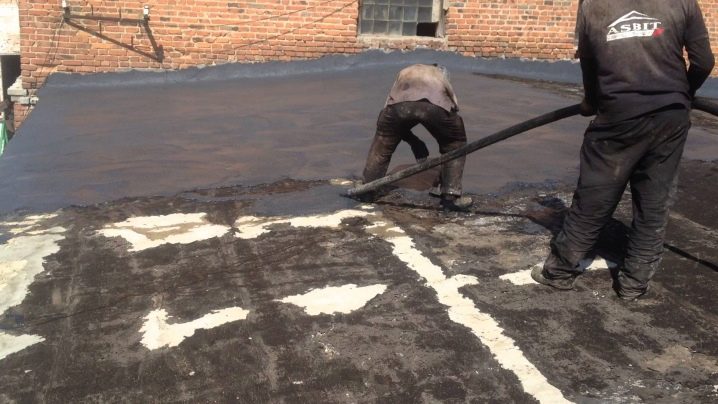Calculate the consumption of bitumen mastic per 1 m2 of waterproofing
The word "bitumen" comes from the Latin word bitumen, which translates as "resin." It is highly soluble in gasoline, alcohol, organic solvents. The basis of both artificial and natural bitumen is oil. Bitumen waterproofing of the object’s walls, foundation or joints on the roof is a guarantee of durability and long service life. Such compounds are highly effective means to protect against moisture, their value is difficult to diminish.
Benefits of bitumen based products
Bitumen is one of the most ancient and effective waterproofing materials. It is obtained as a result of the processing of petroleum resins, has an amorphous structure.There are no specific melting points for the material. The composition has a high density, and is also famous for the lack of porosity. These qualities allow the composition to have good water-repellent properties and to be frost-resistant.
There are several types of bitumen. The composition of each component has a significant impact on the tactical and technical characteristics. If the oil content is too high, then such compositions have a higher plasticity, the melting point of such bitumen is noticeably lower. If the percentage of tar is too high, then this substance does not have high plasticity. To soften it requires a fairly high temperature.
Based on these parameters, bitumens are differentiated into the following species:
- for building;
- for roads;
- to insulate the roof;
- for waterproofing joints.
Bitumens with maximum elasticity are considered the highest quality. The main advantages of bitumen include the following:
- high coefficient of water resistance;
- excellent adhesion;
- stability and strength;
- low price
Bituminous mastic has disadvantages, such as:
- over time, the coating becomes brittle, cracks appear.As a rule, such phenomena occur after 5 years of operation;
- most often have to be applied manually, this process is time consuming and time consuming;
- It does not tolerate ultraviolet radiation, so the roofs are in the risk zone, because they are most exposed to sunlight;
- It is not recommended to apply in places of high mechanical loads.
Species
Bitumen is divided into two types: artificial and natural. The first type is obtained during the processing of oil, heavy resinous compounds, which are called tar, are precipitated. It is from this material that an artificial version is made.
There are four types of production of tools based on bitumen, such as:
- residuals Compounds are solids with a small viscosity. They are generated by vacuum distillation;
- oxidized bitumens are obtained after the processing of tar using oxygen treatment. Such bitumen has greater ductility and heat resistance;
- cracking bitumen is obtained as a result of the manufacture of gasoline; after the distillation of crude oil, such bitumen has an increased brittleness;
- compound Bitumens are formed when various residues of oil are mixed together.
Natural bitumens are digested in boiling water, have wide application in the creation of paints and varnishes. They are represented by such three types as:
- bitumens from the layers, because many rocks (limestone, sandstone) have a high content of bitumen;
- surface options can be found on the surface of rocks;
- vein types have a low percentage of mineral additives.
According to the method of application, bitumens are differentiated into the following:
- for building - bitumen from oil, which has the designation BN, is used for concrete;
- for roofing - oil, roofing bitumen has the designation BNK, suitable for metal;
- for road surfaces - oil for roads has the designation BND.
When choosing anti-noise bitumen and mastic BPM worth paying attention to the following criteria:
- how many years can serve;
- consumption per square meter;
- how much is;
- ease of installation;
- temperature conditions and setting time;
- where it is possible to carry out work - inside or outside the object.
A very important indicator that must be borne in mind is the coefficient of flexibility of the material at low temperatures.The elasticity of the material is extremely important, because this coefficient is an indicator of its longevity.
The norm for the compositions of different methods of application
The most effective way to protect the object from the harmful effects of the environment - is to use bitumen mastic. Such material is suitable for all types of work. It is better to buy highly modified bitumen compositions of firm production. Good mastic should not contain a solvent. It has the following advantages:
- economical consumption;
- even layers;
- no shrinkage.
Bitumen mastic is waterproof, so as a roofing waterproofing, this composition is ideal. To work with such a substance requires special devices for its warming up. Water-based mastic is not composed of solvents. Due to the absence of smell, it is designed to work inside the premises. It is very important to imagine what kind of mastic is needed per square meter.
The following factors affect the consumption of funds:
- density of the solution;
- application temperature.
Cold bitumen mastic (base solvent) | Cold mastic (water base). Foundation | Hot bituminous mastic. Roof | Foundation | Roof | Foundation |
One layer, mm | 1,0 | 0,5-1,0 | 1,0 | 0,5-1,0 | 2,0 |
One layer consumption, kg per 1 m2 | 1,0-2,0 | 1,0-1,4 | 1,4-2,0 | 1,0-1,4 | 2,0 |
Drying time at + 22 ° С and humidity 50% | 25 | 6 | 6 | ||
Coating temperature, ° С | -8 – +42 | +5 – +30 | from -8 | ||
Humidity base,% | 5 | 9 | 5 |
If you want to put the composition in two layers, then accordingly the indicators in the table are proportionally adjusted.
One of the important parameters is the consumption of the composition per 1 sq. M. meter, and the amount of dry matter content that remains on the surface. The unit of measurement is the percentage of substance of the total consumption of applied mastic. This means that with a small balance increases the consumption of the original mastic. Only then will the film that meets the required parameters.
Most of the bitumen mastics that can be found on the market have an indicator from 25 to 75%. For the thickness of one layer, the rate of mastic consumption at 75% will be 2.5–3 times less than at 25%.
Flexibility is determined by the ratio of two coefficients: the radius of the beam, which is subjected to the test, and temperature.
Flexibility temperature is an indicator at which the material does not crack. Waterproofing of waterproofing largely depends on the deformability of the material - this is the main indicator. Adhesion is also important; if this coefficient is good, then the coating can be considered acceptable.Paint on such a surface will hold for a long time.
How to calculate?
So, the main indicators for bitumen mastic are as follows:
- flexibility;
- plastic;
- adhesion coefficient.
Mastic is made in liquid or solid form. All packages must contain technical data indicating composition consumption and other important properties. To prepare a solid paste, it is necessary to heat it to a temperature of +180 degrees. It is very important to know: how long the substance freezes. This usually happens in no more than 2.5 minutes. It should be remembered that in the bitumen mastic, where there are synthetic additives, there are dangerous toxins. Such compositions can only be used outdoors.
When applying hot mastic for waterproofing, it is necessary to take into account that it is non-shrinking, and the thickness of the applied layer does not change upon drying.
For example, if its layer is 2 mm, then it will remain so. On average, bitumen is spent on 1 square. meter from 0.9 to 1.1 kg. If the thickness of the layer increases to two millimeters, the flow rate increases proportionally and will be more than two kilograms.It is clear that using mastic with a 20% concentration of dry residue, it will take three times more than 75%. These data are required to calculate the amount of purchased material.
Consumption rates
Specifications | Indicators | ||||
Cold use (synthetic base) | Cold application (on water) | Hot application | |||
On the roof | On the foundation | On the roof | On the foundation | On the roof | On the foundation |
1 mm layer | Up to 1 | 0,6 – 1,0 | Up to 1 | 0,5 – 1,0 | 2,0 |
Consumption in kg / m2 | 1,0 – 2 | 1,0 – 1,5 | 1,6 – 2 | 1,0 – 1,6 | 2,0 |
Drying + 22ºС, humidity up to 50%, 24 hours |
For more objective calculations, multiply the number of layers to be used. If in the work there are materials with the addition of fiberglass, then in this case the number of layers increases to three. The hot layer of mastic should be from 2 mm, after solidification it is reduced to 1 mm. For example, the foundation should always be covered with two layers.
Finding a replacement for bitumen mastic is not easy, since it is an extremely economical and highly efficient material.
Recently, a “fashion” has appeared on sprayed mastics, which in a short time in a small area reliably isolate the surface. The basis of such substances is water, with a dry residue of seventy percent, which is an excellent indicator.Such mastics do not smell, they can be used for work in residential premises, they do not contain toxins.
Indicators | minimal | standard | high |
Adhesion strength with base, MPa | 0,1 | 0,1 | 0,2-1,6 |
Relative elongation at break,% | 100 | 100 | 500-1500 |
Flexibility on a bar R = 6 mm, ° С | -5 | -14 | -36 |
Estimated lifetime | 12 | 15-27 |
Coating technology
By the method of coating bitumen compositions are divided into cold and hot. In the second case, the material is heated to the desired temperature, and the selected area is covered with it. After solidification, a solid, even coating remains. This method is found in the construction of foundations, roofs, as well as insulation of joints up to 7 mm. The advantages of this method are as follows:
- economic expediency;
- no shrinkage;
- quick setting
Cold mastics are in great demand. The reason is that it is possible to work with such compositions without special devices. On sale usually there are mixes consisting of one or two components. They differ in terms of storage time and conditions of use. Cold mastics have a longer shelf life and operation.
The consumption of bitumen is the most important indicator; on any package there is a hole in the consumption of the composition.
For example, for bitumen coating of 2 mm per square meter will require from 3.2 kg to 4 kg. An important indicator is the dry residue, which ranges from 25 to 75%. With a high dry residue, the coating will be of higher quality, since they will have a higher coefficient of return. Much also depends on the material to be processed.
There are a number of additives that are recommended to add for a particular surface, among them it is worth noting the following:
- ash;
- a piece of chalk;
- bitumen microparticles;
- crumb quartz;
- polyurethane crumb;
- mineralizers;
- plasticizers.
Useful tips from the pros
It is recommended to follow the following tips from experts:
- before starting work, the surface is thoroughly cleaned from debris, it is well dried;
- all protruding elements and sharp fragments should be removed, they can interfere with the integrity of the coating;
- when waterproofing the foundation, a coating of at least three layers is required, the total thickness can reach about 4 cm;
- it is recommended to apply bitumen with a roller or brush;
- the deeper the basement is located, the more waterproofing layers are required;
- apply the next layer only after the previous one has dried;
- the layers of hot bitumen mastic in the roofing carpet should be 2.0 mm thick, and cold - 1.0 mm;
- unscrupulous manufacturers often do not provide output data for their product. These materials, as a rule, low operational qualities;
- when working with hot bitumen, be sure to use a respirator, gloves, closed clothing and special shoes.
To learn how to calculate the consumption of bitumen mastic per 1 m2 of waterproofing, see the following video:
